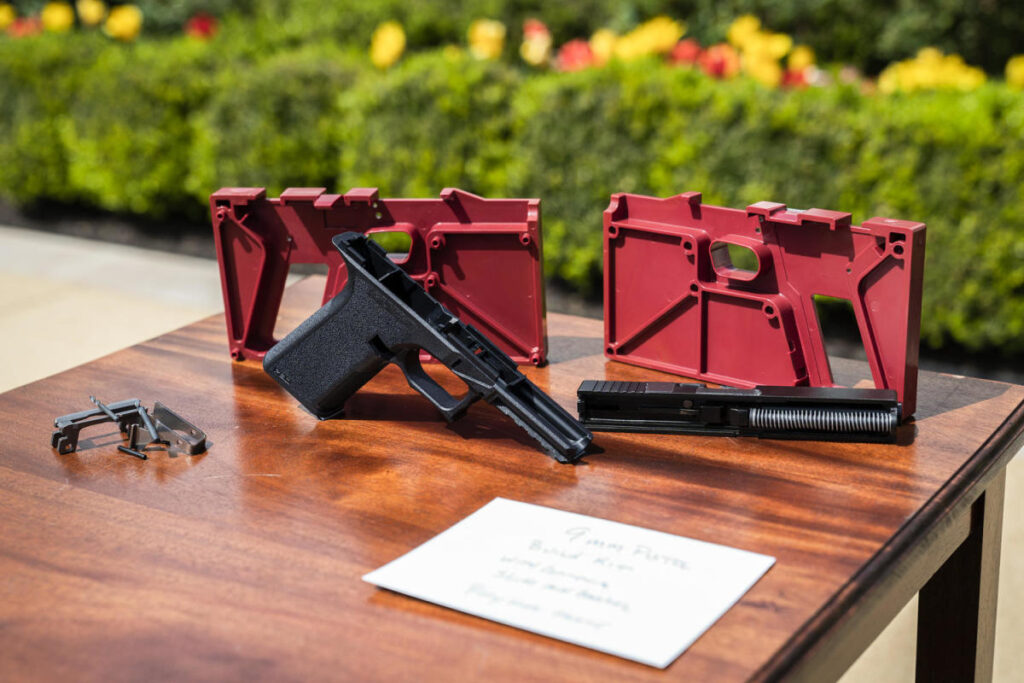On Tuesday, the U.S. Supreme Court engaged in deliberations over the Biden administration’s effort to regulate “ghost gun” kits, which enable individuals to assemble firearms at home while evading existing gun regulations. The administration seeks to impose the same licensing, serial numbering, background checks, and record-keeping requirements on these kits that apply to traditional firearms. This case emerges shortly after the Court ruled against a federal ban on bump stocks, an accessory allowing rapid firing of semiautomatic rifles, and upheld a law that prevents individuals under domestic violence restraining orders from owning firearms.
The Bureau of Alcohol, Tobacco, Firearms and Explosives (ATF) issued the restriction on ghost guns in 2022, citing increasing use of these untraceable firearms in criminal activities. Solicitor General Elizabeth Prelogar highlighted in court documents the overwhelming public safety crisis posed by this trend. In New York City, for example, authorities have seized numerous ghost guns, supporting claims about their connection to rising violence. The regulation currently remains effective, as the Supreme Court previously declined to block it while litigation unfolds, suggesting a potential lean towards supporting the administration’s stance due to the composition of the majority in that decision.
The new regulation redefines specific components used in crafting ghost guns to align with the definition of a “firearm” under the federal Gun Control Act. This encompasses frames or receivers—key components of firearms—thus granting the government the authority to implement regulations on these kits akin to those governing traditional guns. The legal framework maintains that any weapon designed or intended to expel a projectile via explosive action, along with its parts, falls under regulatory control. This expanded definition has fueled debates regarding the statute’s original intent.
Challenges to the ATF’s capacity to regulate ghost guns arose in a lawsuit led by Texas-based judge Reed O’Connor, who earlier sided with plaintiffs, including manufacturers and advocates for gun rights, on the grounds that the regulations improperly extend beyond the original law’s specifications. The New Orleans-based 5th Circuit Court predominantly backed the challengers, emphasizing the narrow scope of the Gun Control Act’s language, which they argue does not encompass gun kits. They assert that any modifications to regulate ghost firearms need explicit congressional approval, thus questioning the ATF’s authority to implement such an extension.
The challengers’ legal arguments are anchored in the assertion that the ATF’s interpretations overreach the text of the Gun Control Act, which they believe should not be applied to kits used for do-it-yourself gun assembly. They maintain that the agency holds no unilateral power to impose restrictions on ghost guns and that Congress must act to facilitate any meaningful changes in regulation. These arguments reflect a tense relationship between regulatory bodies and gun ownership advocates, underscoring the complexities involved in contemporary firearms legislation.
While the case primarily revolves around regulatory definitions and administrative authority, it notably does not directly engage the Second Amendment right to bear arms. As the justices deliberate, the implications of this decision could resonate through the ongoing discussions about gun control measures in the United States, illuminating differing perspectives on public safety, the responsibilities of firearm regulation, and individual rights within this contentious arena. The outcome could establish significant precedent for how ghost guns and similar products are treated in the future under U.S. law.

